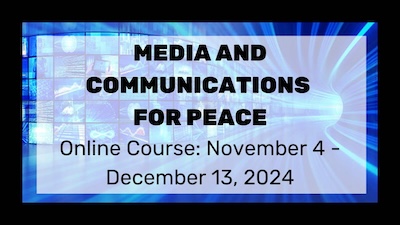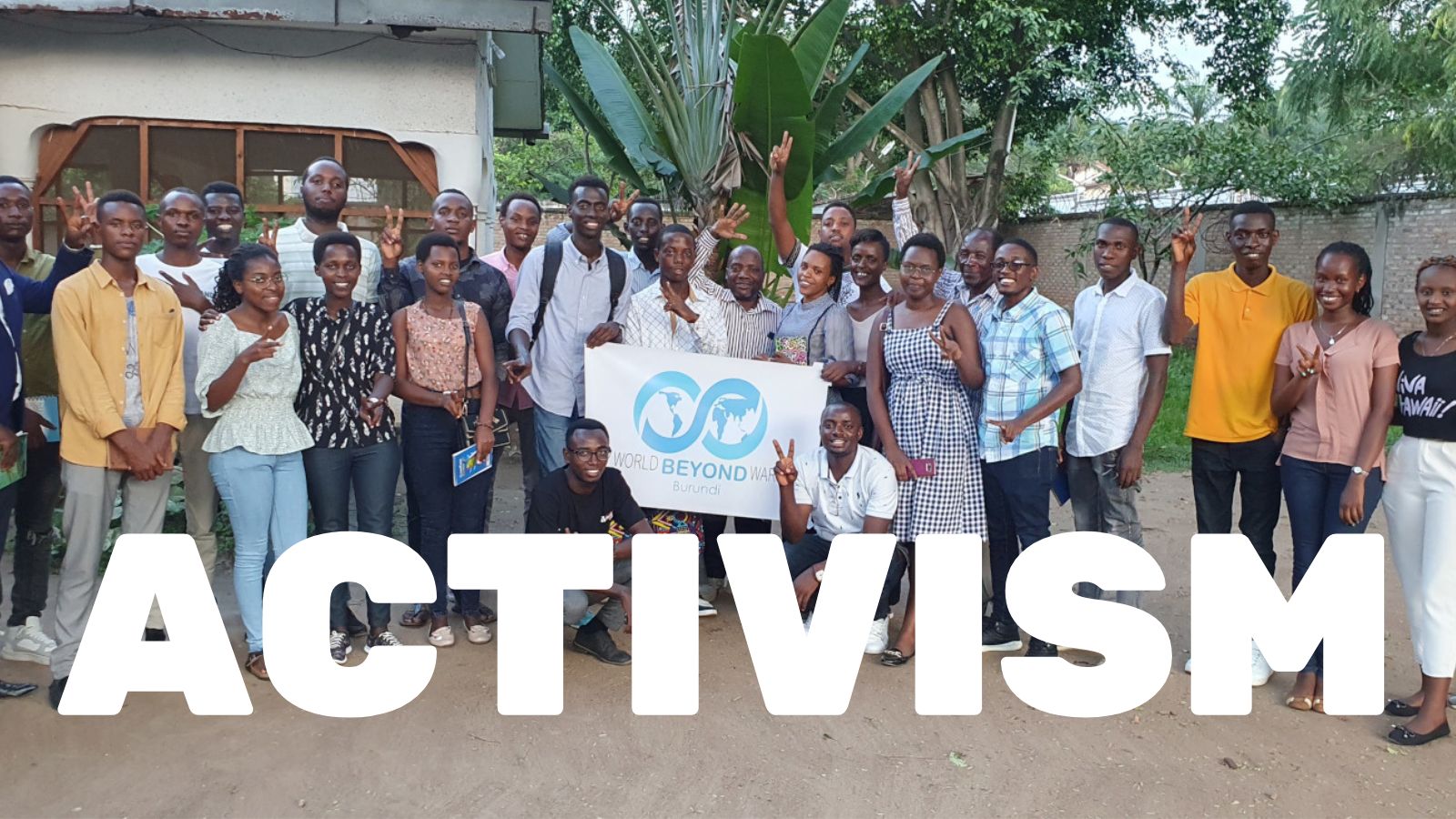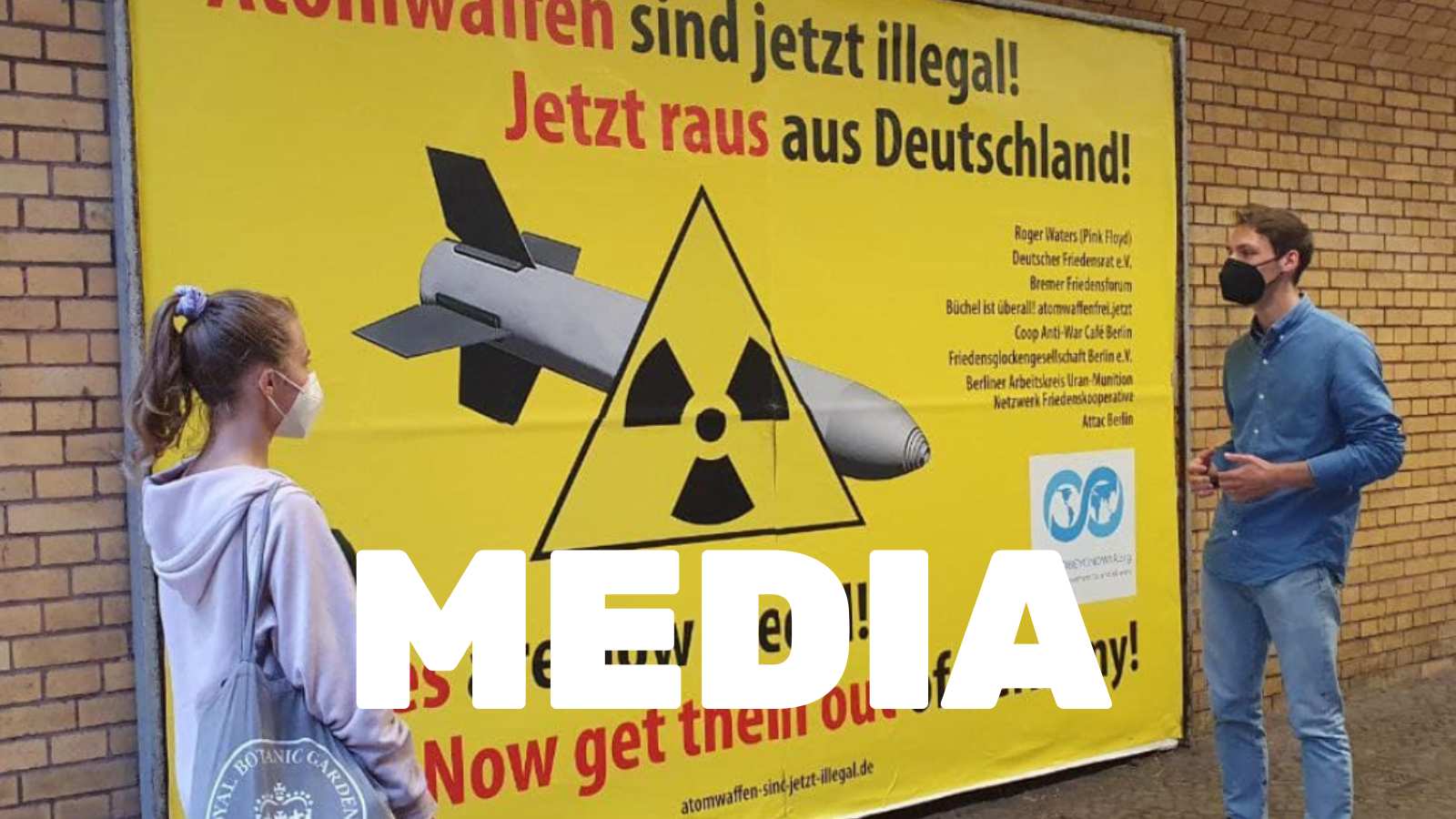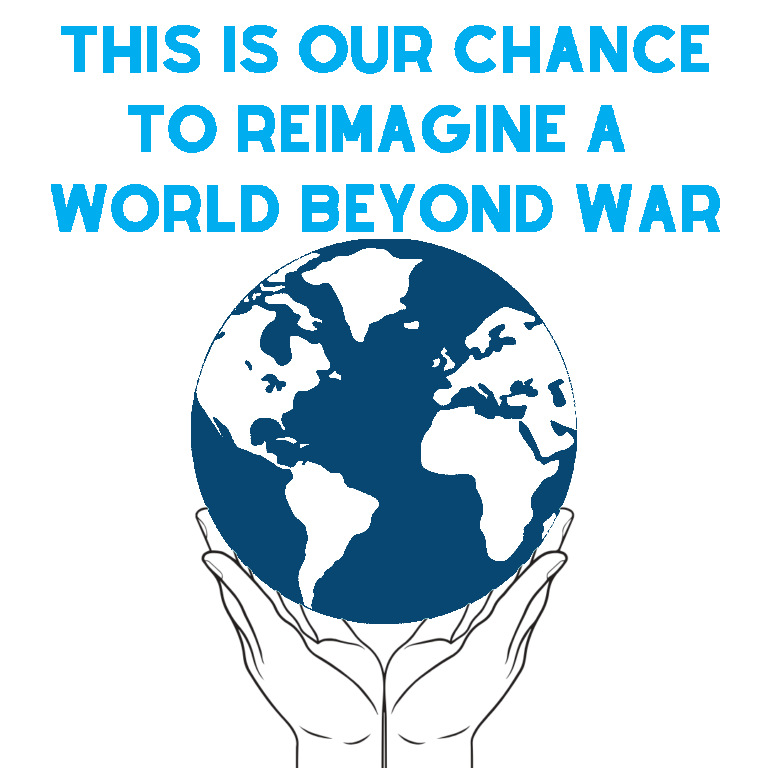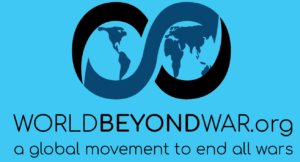 Nan Levinson’s new book is called War Is Not a Game: The New Antiwar Soldiers and the Movement They Built, but it left me wishing there were a “Where Are They Now” chapter, because it ends around 2008. The book is focused on Iraq Veterans Against the War, but includes Veterans For Peace, Military Families Speak Out, Cindy Sheehan, and others. It’s a story that has been told many times during the past several years, but this version seems particularly well done; perhaps the distance helps.
Nan Levinson’s new book is called War Is Not a Game: The New Antiwar Soldiers and the Movement They Built, but it left me wishing there were a “Where Are They Now” chapter, because it ends around 2008. The book is focused on Iraq Veterans Against the War, but includes Veterans For Peace, Military Families Speak Out, Cindy Sheehan, and others. It’s a story that has been told many times during the past several years, but this version seems particularly well done; perhaps the distance helps.
Of course I’ve met many of the characters in person and been at many of the events, in addition to reading many of the accounts. Nonetheless, I learned new things I’d never known and saw them summarized in new ways. And yet I continue to be convinced that everyone, including Levinson, has some basic elements wrong.
She writes that the veterans “brought to the antiwar movement a moral authority no other group could equal,” and that IVAW and the rest of the peace movement failed to stop any wars, something she says peace movements seldom succeed at. She also seems to overestimate what IVAW brought to the movement and to exaggerate its demise.
Let’s start with the question of moral authority. I recently wrote an article comparing the movement against U.S. wars to the movement in the U.S. against Israel’s war on Palestine. The latter, I realized, faces stiff opposition and charges of anti-Semitism but not charges of treason. Its setting in the United States and its distance from Israeli society perhaps combine to produce a movement that I’ve never heard swear its allegiance to “support” of Israeli troops. I’ve heard cheers for refuseniks, but not for Israeli veterans. A general’s son who speaks against the occupation benefits from his pedigree, but never does he preface his remarks with a commitment to “supporting” the Israeli troops.
A movement against U.S. wars in the U.S. is of course very different in this regard, often proclaiming slogans like “Support the Troops, Bring Them Home.” So any troop, and any former troop, including those opposing a war, is given a certain authority from the fact that we are all supposed to “support” them. And any veteran who has been in a war has the actual experiential authority to tell others what he or she saw there. That authority is an invaluable contribution to the peace movement. So is the youth that IVAW has brought into a movement that is disproportionately old. So is the passion that comes with youth or veteranness or some combination of factors. But moral authority?
Levinson tells the story of a former sniper who I know now to be an admirable and dedicated peace activist, and who some have cited as a “real hero” in contrast to the sadist depicted in the film American Sniper, but in telling his story of outspoken opposition to the war, which included blogging against it while on active duty, Levinson quotes him saying “I never once slacked in my duty. Even when it resulted in killing innocent civilians, I still went out of the gate every single day and did my job to the best of my ability.” This leaves morality in a bit of a jumble, to say the least. And it can leave activism in the same state. Is demanding better armor for troops in war as good a strategy as demanding that they be brought home, even if it results in higher military funding? There is no reason to suppose that someone who has always opposed war has more moral authority than someone who has turned against it. But during the process of turning against it, the morality of the values in competition seems questionable and at least worthy of some explanation that Levinson does not offer.
IVAW’s core demands have in fact been absolutely right on: bring the troops home, give them the benefits they were promised, and see that Iraq is rebuilt and returned to its people. Those, however, are also the goals of the wider peace movement.
What about success or failure in ending wars? There too is a topic at least worthy of debate. By the time Levinson finishes her narrative, but unmentioned by her, Presidents Bush and Maliki had signed a treaty requiring that the U.S. war on Iraq end in three years. When those three years ran out, and President Obama was unable to get Iraqi agreement to criminal immunity for U.S. troops remaining longer, the war did indeed briefly end. Iraq remained a hell on earth, of course, and at the first opportunity Obama sent troops back in. But he did so on a smaller scale, against greater skepticism, and with less expectation of being able to drag the war on or escalate it. Heightening the public resistance is the fact that in 2013, a year before Obama managed to restart the war, and two years after he’d been forced to end it, his proposal to send missiles into Syria — a full-scale war according to the plans unearthed by Seymour Hersh — had died stillborn. Public opposition, built up over a decade of activism, was key to rejecting a new war, as Congress members were heard expressing their fear of being “the guy who voted for another Iraq.” If having voted for Iraq were a badge of honor, the Syria debate would have looked radically different. Having voted for Iraq became a badge of shame, not simply due to immutable facts, but due to intense activism and education — which has been slacking off as retroactive support for that god-awful war has been inching back upward.
The fact is that IVAW and every other group and person named in this book has done and is doing a great deal of good. But IVAW didn’t give birth to or transform the peace movement, or scale it back so dramatically just at the time that IVAW was, in Levinson’s view, reaching its zenith. Blind partisanship and monarchism did those things. It was a movement against George W. Bush’s wars that shriveled away as a movement against Barack Obama’s wars. There was nothing IVAW could have done about either development. But it added wonderfully to the movement that was, and is adding remarkably to the movement that is today.
It’s not unusual for me to direct veterans to IVAW or VFP, as most seem never to have heard of such groups. Their work is as badly needed now as ever. But of course it needs to be directed against every war, and even more so against the machinery of war. Levinson remarks on the period during which a quarter of a million dollars a minute was being dumped into the war on Iraq. But ordinary base military spending in the United States is $1.9 million / minute, and it generates wars just as Eisenhower said it would. The drone “pilots” who are coming out and speaking against what they have been part of need to be part of the peace movement. Active duty troops need to know there are groups that support their resistance in whatever nonviolent form it can take.
“The number of things activists who are basically in sympathy with each other can find to fight about is impressive,” Levinson writes with even greater wisdom than I’d thought at first, as I’ve just finished finding points to disagree with in a valuable book. But I mean my arguments as constructive criticism and praise, and as examples of the thinking this book can stimulate. Also in the book are signs of enormous potential. Imagine if we had a communications system to consistently match that moment in which the television networks decided to cover Cindy at Bush’s ranch:
“‘You never knew who would show up,’ said [Ann] Wright, tearing up as she talked about the encampment five years later. ‘In the middle of the night, we’d see headlights coming up this long, deserted road. Here would be a car full of grandmothers coming from San Diego. You’d ask why they were there and they’d say, “We heard on the radio or on TV that Cindy’s here. And we just had to be here.”‘” That encampment and everything else would not have been the same without Iraq and Afghan and other veterans. They bring wisdom, dedication, courage, and humor to the movement we need now more than ever. I look forward to seeing them this Spring in the heart of the empire.

